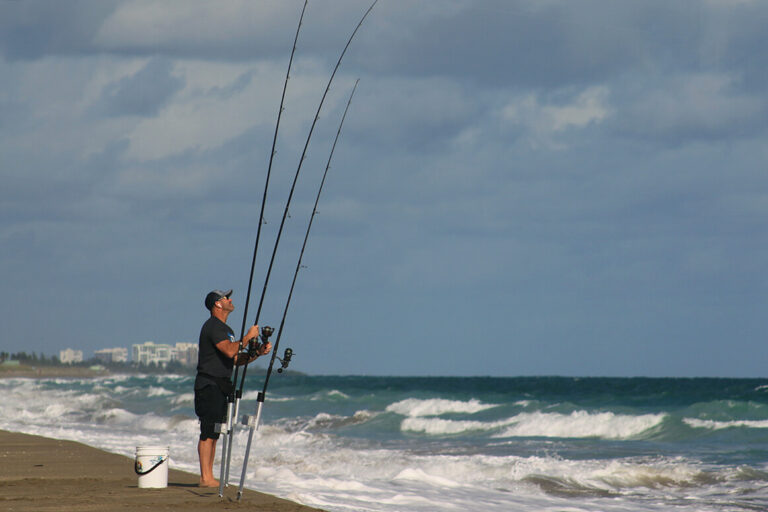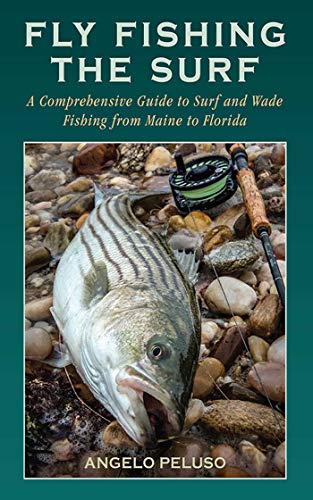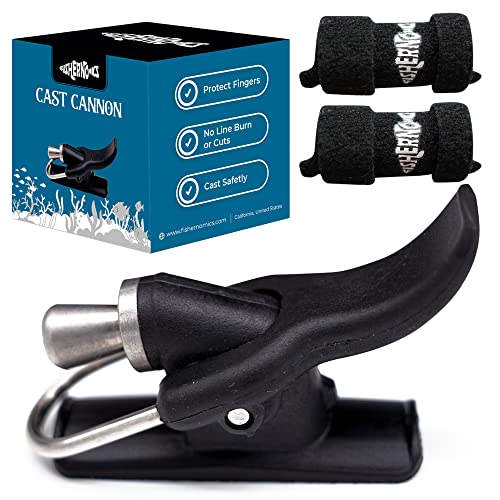Surf fishing can be good after a storm due to rough waters bringing fish closer to shore. After a storm, the turbulent conditions create an abundance of food sources for fish, making it an opportune time for surf fishing.
Additionally, the churning waves often disorient and scatter fish, increasing the chances of catching them. However, it’s important to note that conditions can vary depending on the specific location and the severity of the storm. Before heading out, it is recommended to check local weather and surf conditions, as well as any fishing regulations or advisories in place.
Make sure to use appropriate fishing gear and techniques for surf fishing. By following these guidelines, anglers can increase their chances of success when surf fishing after a storm.
The Impact Of Storms On Surf Fishing
After a storm, many fishing enthusiasts wonder whether it is worth venturing out for a day of surf fishing. Storms can have a significant impact on surf fishing conditions, altering the behavior of fish and the structure of the surf zone.
Understanding how storms affect surf fishing can help you make an informed decision about whether it’s a good time to cast your line. In this section, we will explore the factors that affect surf fishing conditions after a storm, discuss how storms change the surf zone, and weigh the benefits and drawbacks of post-storm surf conditions.
Factors That Affect Surf Fishing Conditions After A Storm
A variety of factors come into play when evaluating surf fishing conditions in the aftermath of a storm. Here are some key points to consider:
- Water clarity: Storms can churn up sediments and debris, resulting in poor water clarity. Murky water may affect the visibility of bait, making it challenging for fish to locate and strike.
- Current strength: Storms can stir up powerful currents along the shore, which might disorient fish or cause them to seek shelter in calmer waters. Understanding the strength and direction of the currents after a storm is crucial when planning your surf fishing expedition.
- Water temperature: Storms can cause significant fluctuations in water temperature. Cooling temperatures might discourage certain fish species from being active, while others may find the newly cooled water quite inviting.
- Food availability: Storms can flush a variety of organisms, such as baitfish and crustaceans, into the surf zone, serving as a feast for hungry fish. This abundance of food can attract predators looking for an easy meal.
Understanding How Storms Can Change The Surf Zone
Storms can reshape the surf zone, altering the coastal ecosystem and creating new fishing opportunities. Consider the following points:
- Sandbars and troughs: Storms may rearrange sandbars and create new troughs, altering the depth and structure of the surf zone. These changes can impact where fish congregate and feed.
- Beach erosion: Powerful storms can erode beaches, exposing rocks, ledges, and other structures that were previously hidden. These newly revealed features can become hotspots for fish seeking shelter or an easy meal.
- Wave action: Storms generate larger waves, causing them to break closer to shore. This increased wave action can stir up the water, dislodging prey and improving fishing conditions.
- Wave period and height: Storm-induced waves can have different periods and heights, influencing the species of fish that are more likely to be present. Some fish are more active in rough surf, while others prefer calmer waters.
The Benefits And Drawbacks Of Post-Storm Surf Conditions
While there are potential advantages to surf fishing after a storm, there are also some drawbacks to consider. Here’s what you need to know:
- Benefits:
- Increased fish activity: Certain fish species become more active and aggressive after a storm, responding to the changes in water temperature, food availability, and wave action.
- Reduced fishing pressure: Many anglers might avoid fishing immediately after a storm, giving you the opportunity to enjoy less crowded fishing spots.
- Unpredictable catches: The altered surf zone and changing conditions can lead to unexpected catches, allowing you to target fish species that may not usually be prevalent.
- Drawbacks:
- Safety concerns: Surf fishing after a storm can be riskier due to rough seas, powerful currents, and hazardous debris in the water. Prioritize safety and be cautious when venturing out.
- Unpredictability: The effects of storms on surf fishing can be inconsistent. While some storms might create ideal fishing conditions, others may result in poor fishing or even dangerous situations.
- Limited access: Storms can damage fishing piers, docks, or access points, limiting your ability to reach prime fishing locations.
The impact of storms on surf fishing can be both positive and negative. Understanding the factors affecting surf fishing conditions, how storms change the surf zone, and the potential benefits and drawbacks can guide your decision on when to embark on your next surf fishing adventure.
Always prioritize safety and be aware of the specific conditions and risks associated with the area you plan to fish.
Tips And Techniques For Surf Fishing After A Storm
After a storm, surf fishing can be an exciting and rewarding experience. The powerful waves and currents can stir up the water, creating the perfect conditions for certain species of fish to become more active. To make the most of your post-storm surf fishing adventure, it’s important to adjust your strategy and equipment accordingly.
Here are some valuable tips and techniques to help you succeed:
Choosing The Right Bait And Tackle For Post-Storm Conditions
- Opt for sturdy equipment: With the water still churning from the storm, it’s crucial to use heavier gear to handle the rough conditions. Consider upgrading your fishing rod to a heavier model and using thicker fishing lines.
- Utilize natural bait: After a storm, fish are often looking for food that has been displaced by the rough waves. Take advantage of this by using natural bait such as live shrimp, sand fleas, or mullet. These types of bait will mimic the local food sources and increase your chances of attracting fish.
- Experiment with lures: If you prefer using artificial lures, go for options that imitate the movements of wounded baitfish. Brightly colored lures can also be effective in murky post-storm water.
Targeting Specific Species Known To Be Active After Storms
- Snook: These hard-fighting fish are known to be more active after storms, as they are drawn to the turbulent water. Look for deeper channels or areas with structure where snook may seek shelter.
- Redfish: Storms often create an abundance of food for redfish, making them more active in the aftermath. Target shallow flats or areas with grass or oyster beds, as these are prime feeding grounds for redfish.
- Pompano: These tasty fish can be found in the surf, particularly after a storm. Look for them in areas with sandy bottoms and use sand fleas or live shrimp as bait to attract their attention.
Adjusting Your Fishing Strategy For Post-Storm Surf Conditions
- Take advantage of high tide: After a storm, the higher tides can bring in baitfish and other prey, attracting larger fish to the shallows. Plan your fishing trips during high tide for the best chances of success.
- Cast closer to shore: In rough surf conditions, fish often seek refuge in calmer waters closer to shore. By casting your line closer to the beach, you increase your chances of encountering active fish.
- Vary your retrieve: After a storm, the water can be murky, making it more difficult for fish to see your bait or lure. Vary your retrieval speed and experiment with different techniques to increase your chances of attracting fish.
Remember, surf fishing after a storm can be unpredictable, but with the right techniques and adaptations, you can increase your chances of a successful outing. Stay safe, be patient, and enjoy the thrill of reeling in a fish in the aftermath of nature’s fury.
Safety Precautions And Considerations
Identifying Potential Hazards After A Storm
Surf fishing can be an exhilarating experience, but it’s important to be aware of potential hazards that may arise after a storm. Here are some key points to consider:
- Check for debris: After a storm, the coastline may be littered with debris such as logs, branches, or even hazardous materials. Take the time to scout the area and remove any potential obstructions before casting your line.
- Stay away from rocky areas: Storms can erode beaches and create unstable cliffs or rocks. Avoid fishing near these areas to reduce the risk of falling or getting trapped.
- Watch out for strong waves: Storms often intensify wave activity, bringing in larger and more powerful waves. These can knock you off balance or pull you into the water. Keep a safe distance from the shoreline and be mindful of any sudden changes in wave patterns.
Understanding Tide Movements And Rip Currents
Tide movements and rip currents play a crucial role in surf fishing safety. Here’s what you need to know:
- Study the tide charts: Before heading out, familiarize yourself with the local tide charts. Understanding the timing of high and low tides can help you avoid getting caught in dangerous situations.
- Be cautious of rip currents: Rip currents are powerful narrow channels of water that flow away from the shoreline. They can pull even experienced swimmers out to sea. Stay alert for signs of rip currents, such as choppy water or a noticeable difference in color.
- Fish during low tide: Fishing during low tide can be beneficial as fish tend to concentrate in areas closer to the shore. However, avoid fishing near channels or deep drop-offs where rip currents are more likely to occur.
Essential Safety Gear And Precautions For Surf Fishing
When it comes to surf fishing, safety should always be a top priority. Here are some essential safety gear and precautions to consider:
- Wear a personal flotation device (pfd): Even if you’re a strong swimmer, wearing a pfd can provide an extra layer of protection in case of an accident or unexpected currents.
- Use appropriate fishing gear: Ensure your fishing rods and lines are suitable for surf fishing and capable of handling strong currents. Heavy-duty equipment can help you reel in larger fish and provide better control.
- Stay aware of weather conditions: Keep an eye on weather forecasts, and if any signs of stormy weather arise during your fishing trip, err on the side of caution and head back to shore.
- Let someone know your plans: Always inform a family member or friend about your fishing plans, including your intended location and estimated return time. If an emergency does occur, this will help ensure that someone can raise the alarm if needed.
Remember, while post-storm surf fishing can be productive, taking safety precautions is crucial. By identifying potential hazards, understanding tide movements and rip currents, and ensuring you have the right gear and precautions in place, you can enjoy a safe and successful fishing experience.
Conclusion
After a storm, many anglers wonder if surf fishing is a good idea. The answer is, it can be. Storms can churn up the water, bringing in new baitfish and stirring up the feeding patterns of larger game fish. However, it’s important to take some precautions.
Check the weather conditions before heading out and always prioritize safety. Storms can create dangerous surf conditions, so be aware of rip currents and high tides. Additionally, assess the water clarity before casting your line. If it’s still murky from the storm, it may not be the ideal time for surf fishing.
On the other hand, if the water has cleared up and the conditions are safe, you might just find that post-storm surf fishing can be incredibly productive. So, keep these tips in mind and get ready to reel in some exciting catches after the next storm rolls through.






